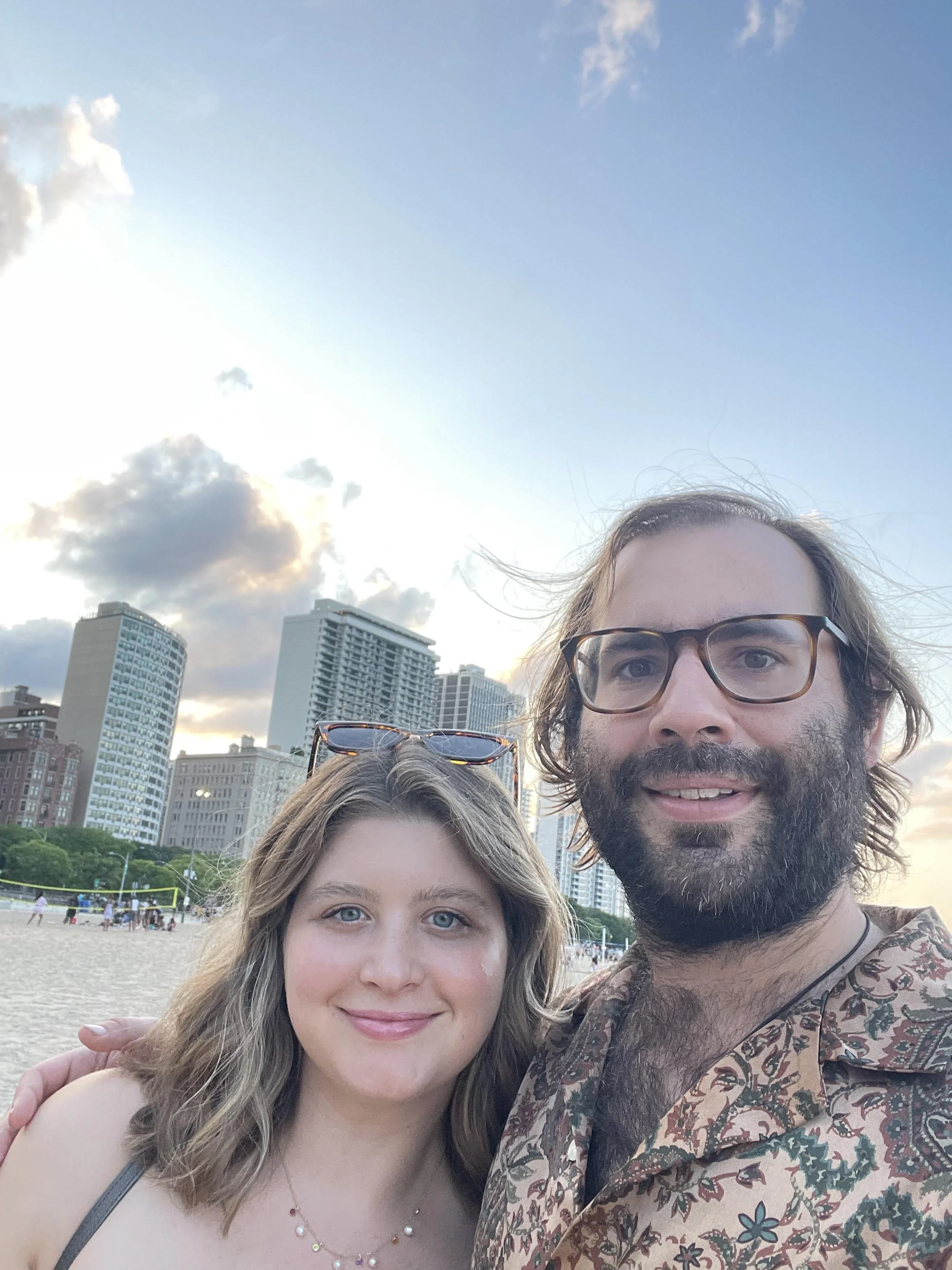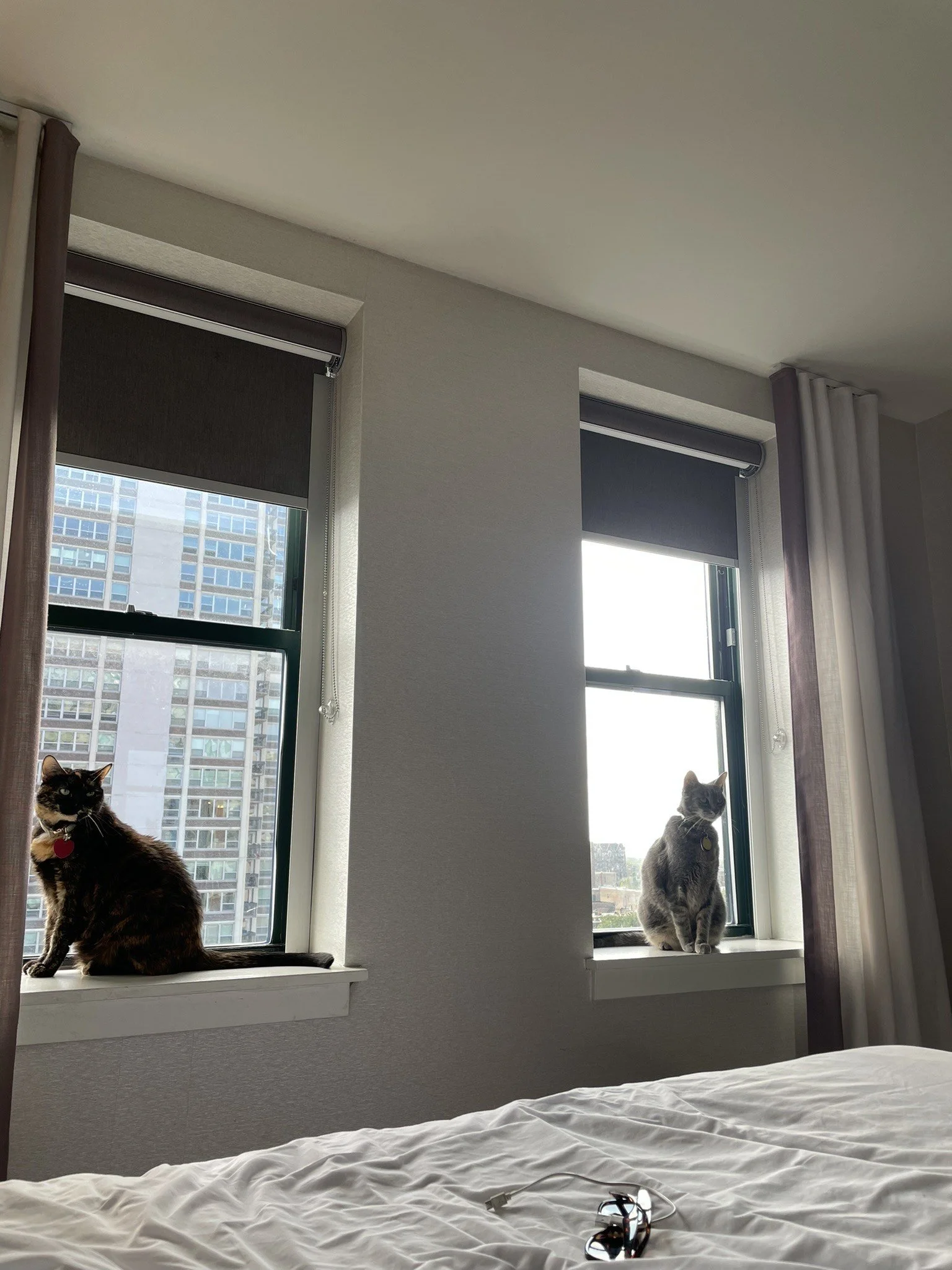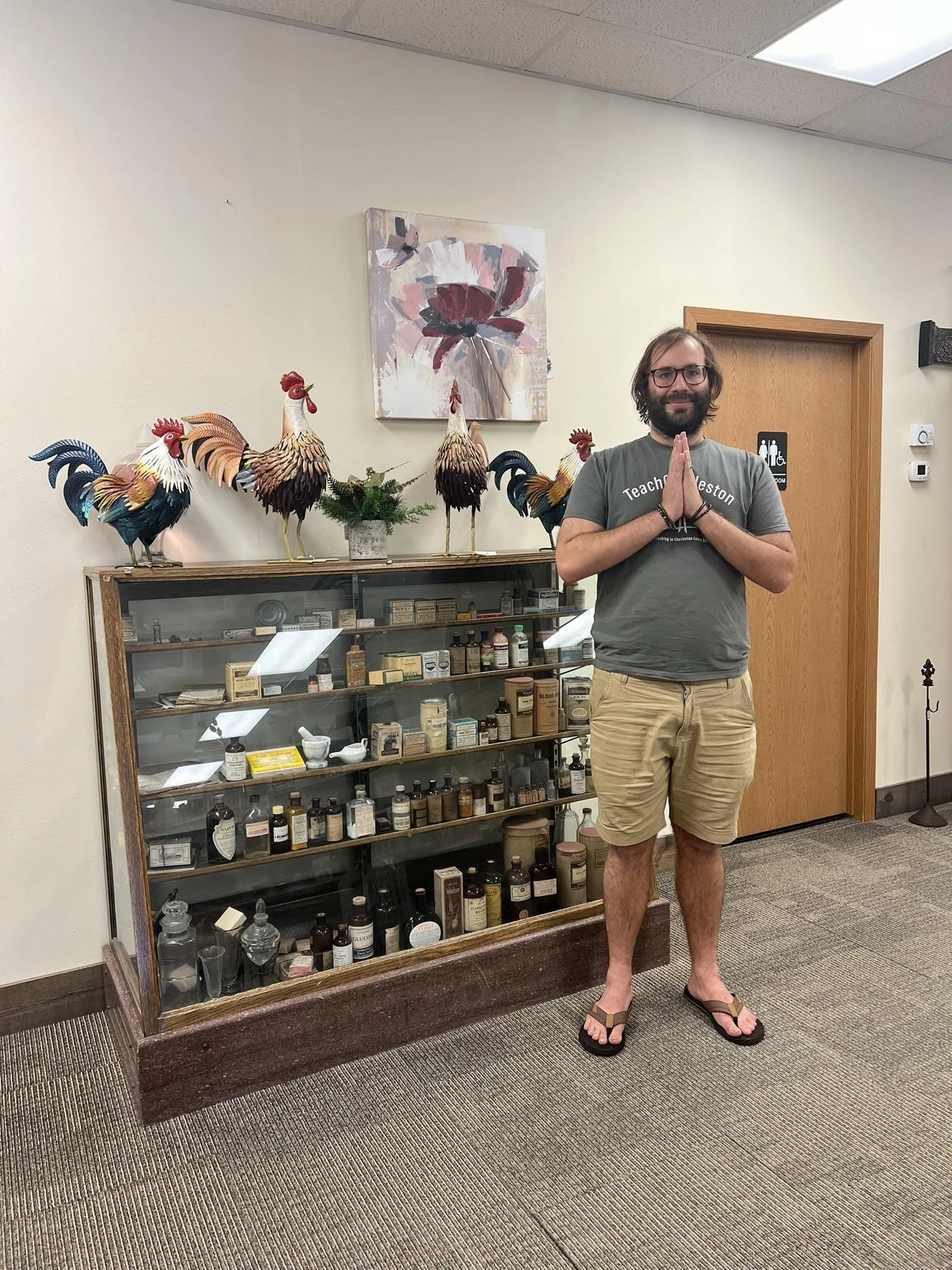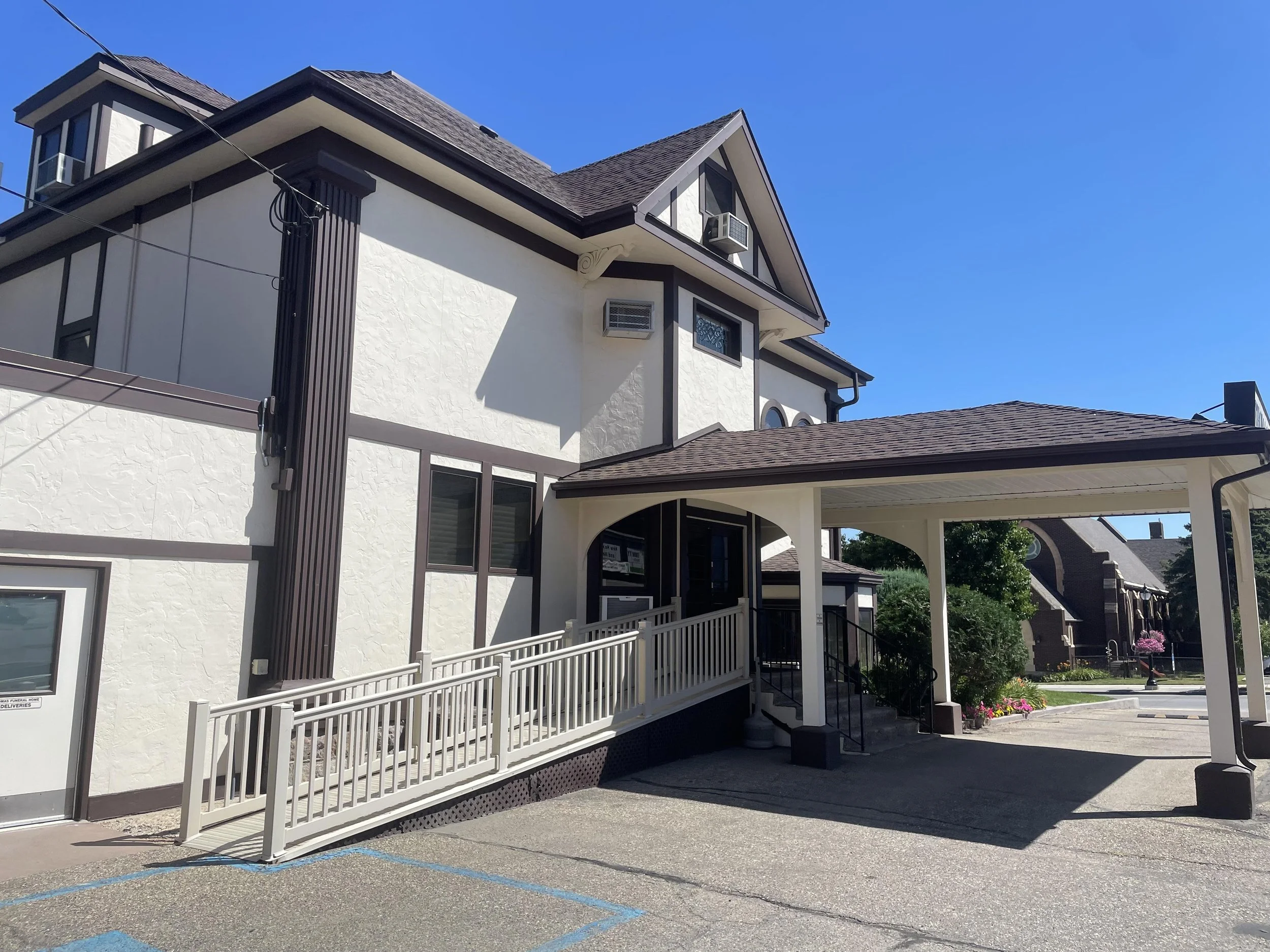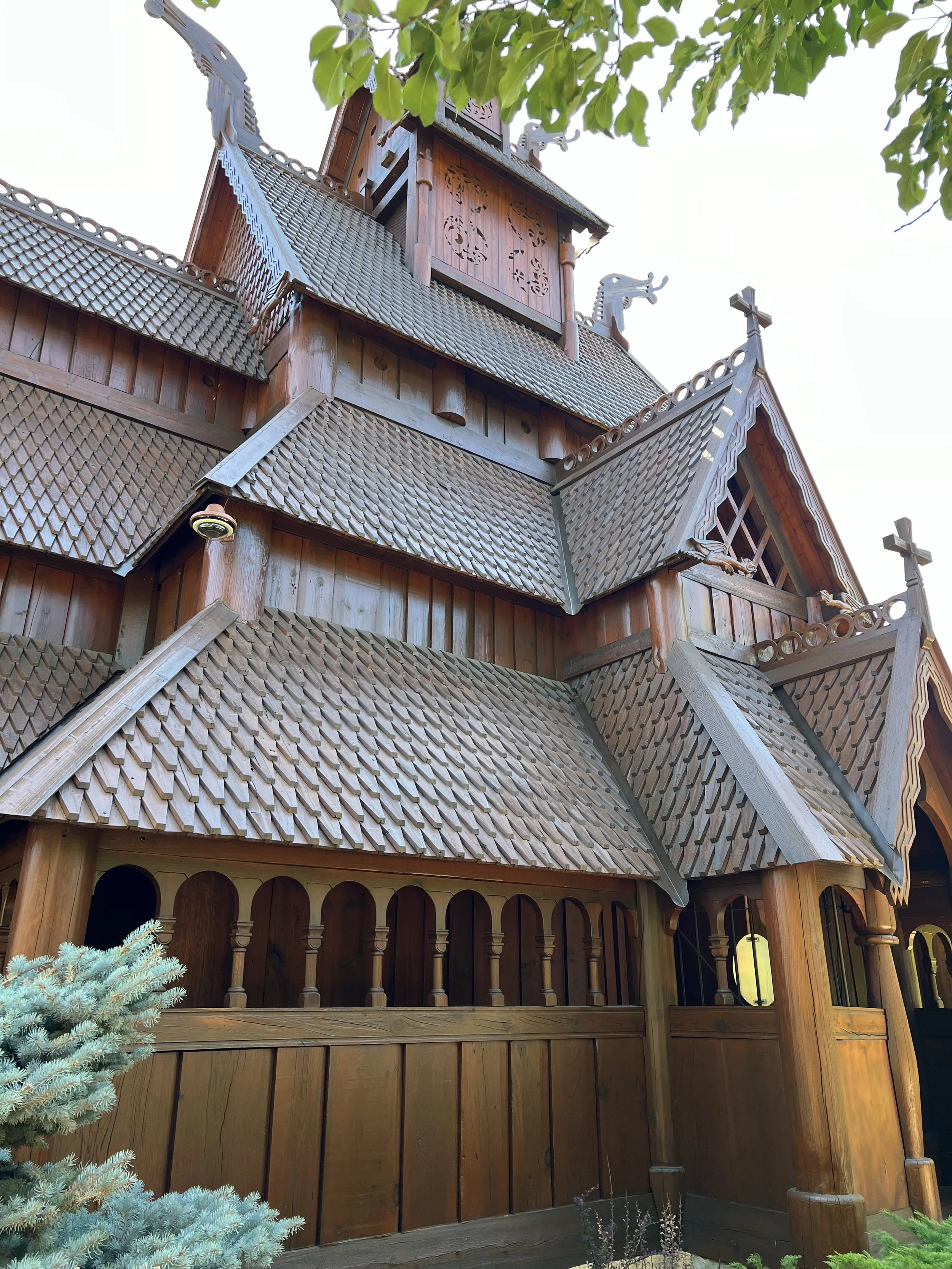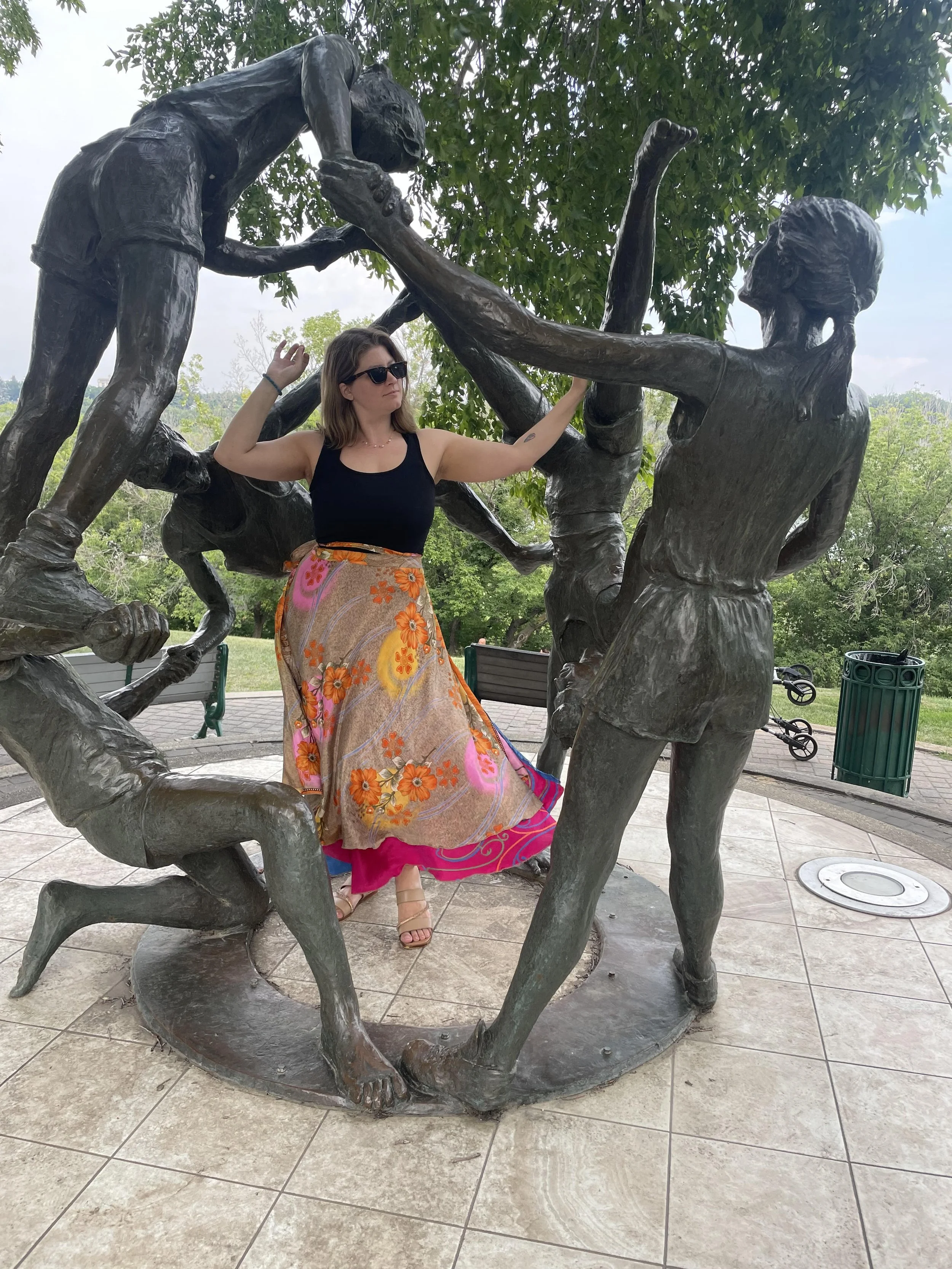Psychedelic Underground Railroad
Traveling across the country with my partner Emily to begin a PhD program studying the history of psychedelics at the University of Saskatchewan on the heels of getting married in the mountains of Picken’s South Carolina with our families beside us has to be one of the most exhilarating experiences of a lifetime. The full circle nature of arriving in Picken’s the first night of the road trip, where we were wedded by Abigail Mcclam, encircled by family from Washington state, South Dakota, Minnesota, North Carolina, and Connecticut, prepared us for the long road ahead. Our two trusty cats, Murphy & Cash, were on the road with us, unsure where they would stay and what lay ahead. We said goodbye to our Picken’s family and headed on up the road to Louisville Kentucky. As a lover of bourbon, I had hoped to spend more time in the city, but this was our longest day of driving at over 6 1/2 hours, and upon our arrival, we only had enough time & energy to walk to a local restaurant for cocktails and a bite. The drinks and food did not disappoint, and the cats loved this stay more than they had their previous night, separated from us in the basement. The place featured a loft, and the cats kept walking up and down the stairs to look down on the whole space. The next morning we had an amazing breakfast before heading up to Chicago. The trip wasn’t without its perils as the tire pressure light began to turn on amidst a heavy storm outside of Chicago. I had four brand new tires on the car but was still worried about if we were going to make it to the next destination; luckily for us, the problem was the hubcap on the left rear tire had been placed directly on the sensor, and I only needed to pop the hubcap off and move it slightly.
Before arriving at the Gold Coast neighborhood in Chicago (one of the most affluent areas of Chicago), we were stuck by the desolate wasteland, the industrial complex of a city that is Gary, Indiana. My favorite rapper, Freddie Gibbs, rose to prominence rapping about breaking out of the steel city trap by selling cocaine, cannabis, ecstasy, and whatever else he could get his hands on. This man has reinvented his youth on story album after album, and it would be a dream to interview him and get insight into the mindset of an inner-city drug war veteran who graduated to rapping about the streets and not letting the streets drag him under. Arriving in Chicago we hit some traffic stalling us out on the beautiful Lake Shore Drive with a story from a professor of mine at the College of Charleston in mind. Apparently, in 1973, when Chicago-based rock group Aliotta Haynes Jeremiah released their album Lake Shore Drive, there was some confusion that the group was talking about LSD in their song Lake Shore Drive. In Chicago, the song was clearly referring to a day by the beach on Lake Michigan, but to the rest of the country, the lines "Just slippin' on by on L.S.D. / Friday night, trouble bound" have been construed as tongue and cheek for LSD usage. We were absolutely enraptured by our time in Chicago when the social changes we were looking for in the move began to take place. We were not in the south anymore. That evening we walked along Lake Shore Drive and made our way up to a beach located on the lake. This is a must visit location if you are in Chicago area around sunset.
The next morning, we headed to St. Paul, Minnesota, to stay with my cousin & Uncle, who were both in Pickens, to watch us be wedded in June. On the road, we listened to Bob Dylan albums in succession, meditating on how a young Bob Dylan must have felt leaving Minnesota and heading up to New York City. Our favorite Dylan albums are 1976’s Desire & 1969’s Nashville Skyline. It had been years since my last visit to Minnesota. I fell under a mental health spell in 2010 that would later be compounded by addiction after my grandfather passed away, and I haven’t been back to my mother’s homeland of the Midwest since. Waking in the morning, I was reading the obituary for my Aunt Claire, my mom’s sister, whose funeral I didn’t get to attend in 2020 amidst my recovery from years of addiction and inability to travel by plane. While reading the words, Emily called me to the bathroom to look out, where we saw a white squirrel. We took this as a sign that Aunt Claire was with us, and when we asked my Uncle Doug about the squirrel, he said he calls him Whitey and that there are two. They show up every 3-4 years, and their last appearance is around the departure of my aunt. Doug took us to a waterfall in Minnesota where we were greeted by monuments to local Native American figures Minnehaha & Hiawatha two Native lovers facing the comings of western colonization forever immortalized in stone statues. This reverence for the Natives is sadly a missing feature from the landscape of Charleston, South Carolina.
Next, we headed on to my mother’s hometown, Aberdeen, South Dakota. Aberdeen has historically been the third biggest city in South Dakota, but growth around Sioux Falls and Rapid City is threatening this legacy as new areas are growing to prominence. The Dakotan countryside is a remarkable place for self-discovery. If you’ve never been or shudder at the thought, you need to rethink your next nature retreat. The land and lakes that you pass traveling from Minnesota to Aberdeen are a transportation into a simpler time, a time of peace and opportunity. In Aberdeen, we were fortunate to have more family members with whom we could stay. As a youth, I would travel from Minneapolis to Aberdeen to Fargo, North Dakota, ending up in Manitoba, making this part of the trek feel the most familiar. That night, we had dinner with the Schaunamans, our South Dakota family, who have been in the farming business locally since 1899. My Aunt, Uncle, and cousin Emma made it to Picken’s, but my cousin Sam was unable to attend the wedding. I hadn’t seen Sam since he was 16 years old, and I was 21. The boy had become a man with a burlier beard than me and the stature of a professional footballer meets a wrestling star (he was both). The next morning, Aunt Carolyn took us to Uncle Craig’s farm, where we saw a farmhouse from 1917 and a restored tractor from 1947 and walked around the largest farm we had ever seen.
The farm is one of the largest in the area, capable of storing over 560,000 lbs. of corn, soybeans, and wheat. In 2009, Craig became one of the state's head farmers under the Obama Administration. For the next eight years, he circled the state monitoring farms and had to drive 90 miles a day (but we are talking about 90 miles of wide-open plains). Aunt Carolyn took us by the house where my mom grew up, and we had a great time tracing the family legacy in the area. My grandfather was a state senator in the late 80’s and early 1990’s. I was unable to attend his funeral in 2010, and we visited his grave site where I could feel him in my mind’s eye. He dwells in the land of the type of cemetery that small-town families dream of. His first wife, Loyola’s grave is right next to his, she died in 1974 when my mom was fresh out of high school. Loyola (pronounced Lola) was a female anesthesiologist who went to medical school at a time when women were not doctors. I proudly told my students all three years of teaching public school about her and how not only was she incredibly smart, but she was also a Mardi Gras Beauty Queen in the 1950’s.
Traveling northwards the next day, we headed up to Minot, North Dakota, another important location for retracing my ancestral history. In Minot, my great-grandmother Mildred was born in what would become the Thomas Family Funeral Home. The home was built in 1903, becoming a funeral home in 1926. We also went to the Scandinavian Heritage Center, where my mom’s cousin Paul did some of the carvings. The slant church style dates to the 1200’s and was a feature of Norwegian and Swedish life. The church had a side door that would be opened for the “lepers” or the sick so that they could still be served communion without having them inside the halls of the main church.
Mildred met and married a man named Phineas Taylor. Phineas served in World War I, and after the war, he went to pharmacy school in England. When he graduated, he returned home and began apprenticing in the pharmacy trade. He started his own pharmacy in Kenmare, North Dakota, in 1927. Kenmare today is home to less than a thousand people and is one of the furthest outposts in the United States, near the Canadian border that Emily and I crossed. At the one and only tarot sound bath that I attended of Emily’s, at the physical location of Hampton Park Healing Collective located within the Well Studios, my draw was that of a white buffalo. I inferred that this card had to do with the rare journey that is driving from Charleston, South Carolina, to Saskatoon, Saskatchewan. I did not know at that time that the name of my great-grandfather’s soda fountain within his drug store was the White Buffalo Soda Fountain. This vision of the turn of the century medical marketplace is still alive within the Kenmare Drug Store located at 109 1st Ave NW, Kenmare, ND 58746, United States, now across the village square from its original location. Inside, we ate the original White Buffalo Ice Cream Sundae, which was delicious(chocolate ice cream + homemade marshmallow sauce + nuts), and we located a chest of medical artifacts that included Cannabis Indica tinctures out of Indianapolis, hemp seed-derived products, and even Novocain. My mind was filled with wonder, imagining the world in which my great-grandfather was distributing cannabis tinctures until later into his career of practicing medicine; the plant was made illegal by the marijuana tax act ten years later in 1937. Wondering what my rural agrarian community leading great grandfather might have thought about this change in medical practices, we headed onto the Canadian border, where cannabis is legal across all ten provinces.
Once in Canada, we headed to Regina, Saskatchewan, for our first night in the country. Prior to our move our friend Elder Carlie Towne from Charleston told us one of her mentors whom she worked with in Charleston and later visited while he was living in Regina, Saskatchewan was a Dr. YN Kly. Dr. Kly was born in the south and later moved to the University of Regina in Saskatchewan to be a professor. He wrote books on race and culture and was the chair and cofounder of the International Human Rights Association of American minorities. Another crazy synchronicity with this man is that last year, Elder asked me to digitize some of her old videos, which were a collection of Late-Night David Letterman-style discussions that she had with various figures in the world of Gullah Geechee. These were actually broadcast on TV in the early 90’s locally in Charleston. One of the episodes featured a conversation with Dr. YN Kly. He held a PhD in political science specializing in international law. He won the Gustavus Myers Outstanding Book Award in 1990 for International Law and the Black Minority in the US, and in 1995 he won an award for A Popular Guide to Minority Rights.
Once in Saskatchewan we were struck by how little activity there was for miles and miles heading into the country. Sure the same is true of heading into South Carolina, South Dakota, and North Dakota but this was a new level of nothing. The only sights to see are the occasional granary located alongside railroad tracks every 30 kilometers or so, which once or still serves as the focal point of existence on the land. Saskatchewan, South Dakota, North Dakota, Wisconsin, parts of Illinois, Nebraska, Indiana, and Iowa all have a similar feel of life serving the farm. This has remained unchanged in pockets of these states since their inception. Driving through these parts of the country, it’s clear that the farm way of life is still a dominant force in shaping community structures today in 2024. My cousin Sam serves on the town boards for development in Aberdeen, South Dakota and he also now owns the head farm house on the largest farm in the area. Clearly the interests of the farm way of life are equally represented in town development meetings as are talks of breweries and restaurant expansions on Main Street. Once we made it to Regina a city of over 220,000, we relaxed into a mode of “ok Saskatoon will be something like this”. We were pretty beat down in Regina after seven days on the road, but we managed to head over to a restaurant called Earls. Earls is a Canadian restaurant that also features Asian food on the menu likely due to the prevalence of Southeast Asian immigrants in Saskatchewan. This first dinner was an atmospheric evening amidst the living skies(or so they call them).
The sun is up very early here this season and sets rather late. The ethnic influence on the food scene here is undeniable. Emily and I are big fans of Asian food, and the access to it here is insane. After dinner, which ranked almost as high as our gourmet meal in Chicago, we headed to the lakeshore drive equivalent area in Regina. Equal it was. This park left a unique impression on us; Canadian geese, enormous pelicans, and an unbelievable sunset with the legislative building in the background made this location one we will revisit again (even if it’s two and a half hours from Saskatoon.) Saskatchewan has only been a colonized place since 1883. The first settlers of Saskatoon were members of the temperance movement. They seemingly removed themselves from civilization in order to effectively not be influenced by the fringe elements of society. Upon our arrival in Saskatoon the afternoon after leaving Regina, we soon realized that this initial intention for the city has failed miserably with an ensnared population in the tangles of addiction. The issue with addiction is visible on the streets in Saskatoon, perhaps this is why the Saskatchewan government embraced legalizing cannabis in 2018 (like the rest of the country). Before moving I had been reading the local news and seen a rash of arrests for fentanyl, cocaine, and methamphetamine. I didn’t think too much of it because these exact same drugs are found frequently in North Charleston and the greater Charleston area. It’s interesting that here in Saskatchewan they seem to always be found together. Are the same Mexican cartels running drugs through the United States entrenched here in Saskatchewan? Examining photos of seizures suggests so. The packaging of the fentanyl is identical to that of what is being found in the United States. The drug is sold in colored powder and the color dictates the potency.
We’ve been getting everything ready in Saskatoon at our new basecamp the past few days and while refueling we have tried some amazing world class coffee shops and dinner spots. We are located just a few minutes walk from the South Saskatchewan river, the river runs through town extending for over 1392 kilometers and provides a scenic walk. Stay tuned for more of our adventures abroad in Canada & beyond!
Spread Peace and Love
Reduce Harm and Defend Others
Will
